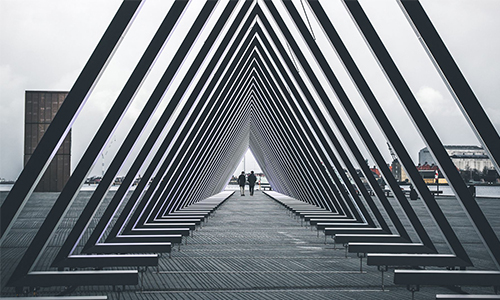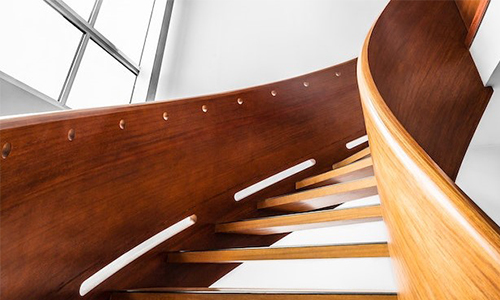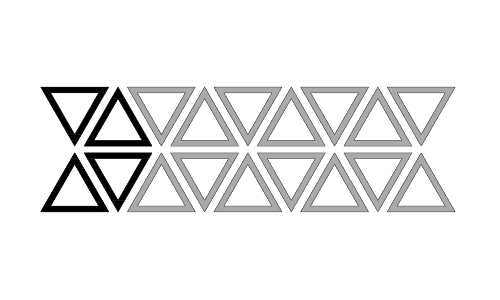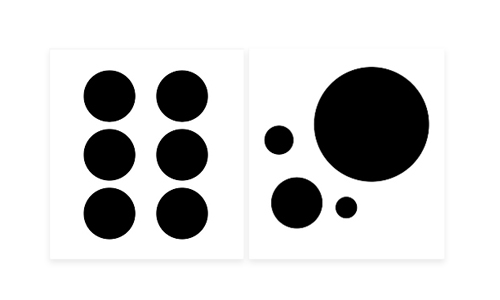Mastering the Seven Principles of Architectural Design: The Path to Designing Perfectly Crafted Structures
Architect Shrawan Azagalle | 16 april 2023

Architecture design is a complex and multifaceted field that requires an understanding of various principles and elements to create successful designs. One of the most important aspects of architecture design is the use of the seven principles of design. These principles are essential in creating visually appealing and functional designs that effectively communicate a message or idea. In this blog post, we will explore the seven principles of design and their importance in architecture design.
Empty Space
Empty space, also known as negative space, is the area around and between objects in a design.
It is an essential element in architecture design as it helps to create balance and contrast.
Empty space can be used to draw the eye to a particular element in a design or to create a sense of calm and simplicity.
In a modern office space, a large conference room table is placed in the center of the room with chairs arranged around it.
The area around the table is intentionally left empty to create a sense of openness and clarity.
This empty space helps to balance out the large table and chairs, making the room feel less crowded and more functional.
The negative space around the table also creates a focal point for the room, drawing attention to the importance of the conference table as a central hub for meetings and collaboration.

Alignment
Alignment is the positioning of elements in a design relative to each other.
It is crucial in architecture design as it helps to create a sense of order and organization.
Proper alignment can help to guide the eye through a design and create a hierarchy of importance.
Imagine a building with a row of columns supporting a roof or portico.
If the columns are evenly spaced and aligned in a straight line, it creates a sense of order and balance.
This alignment creates a strong visual connection between the columns, and the repetition of the evenly spaced columns creates a feeling of unity and cohesiveness.
On the other hand, if the columns are placed haphazardly or without a clear sense of alignment, it can create a feeling of disunity and chaos.

Contrast
Contrast is the use of different elements, such as color, shape, and texture, to create visual interest and distinction.
It is an essential principle in architecture design as it helps to highlight important elements and create a sense of depth and dimension.
Imagine a building with a dark, monochromatic façade. By adding a bright, colorful element, such as a red door, it creates a sense of contrast and visual interest.
The red door becomes the focal point of the design, drawing the viewer's eye and highlighting the entrance to the building.
Similarly, in the design of an interior space, the use of contrast can help to create a sense of depth and dimension.
For example, by pairing light-colored walls with dark-colored furniture, it creates a sense of contrast and visual interest.
The dark furniture becomes the focal point of the space, drawing the viewer's eye and creating a sense of depth and dimension within the room.

Movement
Movement refers to the visual flow of a design. It is the way that the eye moves through a design and is essential in architecture
design as it helps to create a sense of direction and purpose. Proper use of movement can help to guide the viewer's eye through a
space and create a sense of movement and energy.
Imagine a building with a curved façade. The curve creates a sense of movement, leading the viewer's eye along the building's exterior.
The curve can be used to create a sense of direction, drawing the viewer's eye toward the entrance or other important elements of the design.
Similarly, in the design of an interior space, the use of movement can help to create a sense of flow and energy.
For example, by arranging furniture in a circular or diagonal pattern, it creates a sense of movement and flow within the space.
This movement can help to guide the viewer's eye through the space and create a sense of purpose and direction.

Emphasis
Emphasis is the use of color, size, shape, and other elements to draw attention to a particular element in a design.
It is an important principle in architecture design as it helps to create a focal point and communicate a message or idea.
Imagine a building with a large, brightly colored entrance.
The use of color and size draws attention to the entrance, making it the focal point of the design.
This emphasis can communicate a message of welcome or importance, highlighting the entrance as the primary point of access to the building.
Similarly, in the design of an interior space, the use of emphasis can help to create a focal point and communicate a message or idea. For example,
by placing a piece of artwork or a unique piece of furniture in a prominent location, it draws attention to that element and creates a sense of importance or interest.

Repetition
Repetition is the use of similar elements throughout a design.
It is an important principle in architecture design as it helps to create a sense of unity and consistency.
Proper use of repetition can help to reinforce a message or idea and create a sense of harmony.
Imagine a building with a series of repeating arches along its façade.
The repetition of the arches creates a sense of unity and consistency, tying the design together and reinforcing the building's overall aesthetic.
Similarly, in the design of an interior space, the use of repetition can help to create a sense of harmony and consistency.
For example, by using the same type of flooring throughout a space, it creates a sense of unity and reinforces the overall design aesthetic.

Balance
Balance is the distribution of visual weight in a design. It is an essential principle in architecture design as it helps to create a sense of stability and harmony.
Proper use of balance can help to create a sense of equilibrium and prevent a design from feeling too heavy or unbalanced.
Imagine a building with a symmetrical façade,
with identical elements on both sides of the building. This creates a sense of balance and stability, with the visual weight distributed equally on both sides.
Similarly, in the design of an interior space, the use of balance can help to create a sense of equilibrium and harmony. For example, by placing identical furniture or
décor items on opposite sides of a room, it creates a sense of balance and stability.
